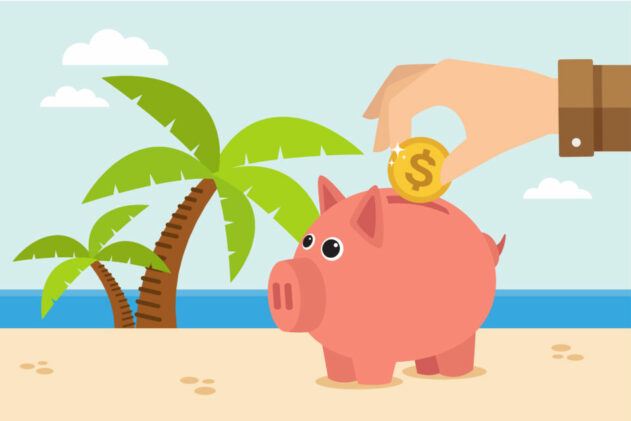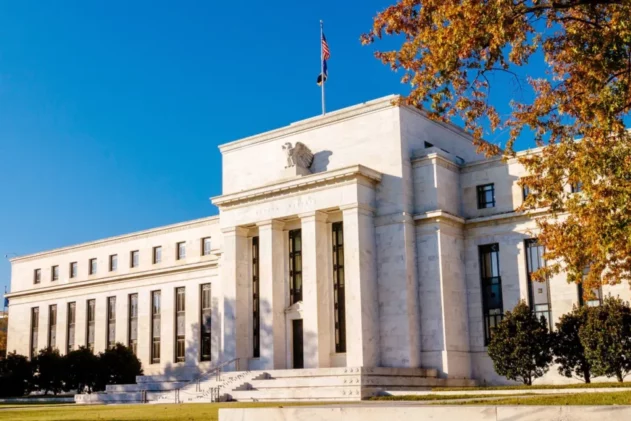Interest rate caps have a long history of capturing the imagination of politicians. Politicians rightly want to protect average citizens from abusive practices. The issue seems to have no political downsides. After all, no one likes borrowing money and no one lines up to defend lenders. Usury laws have been argued for thousands of years. Early Western culture seized on the idea that loaning money was inherently unproductive and therefore not worthy of profit and even immoral.
Put aside the moral and ethical language, we live in an age where questions of exploitation can be answered—or at least informed—by the collection of broad datasets, econometric analysis, and testing our assumptions with scientifically rigorous procedures.
So, what does the data say about capping interest rates on borrowing? A recent paper published in the Journal of Banking and Finance with the descriptive title of “Impacts of Interest Rate Caps on the Payday Loan Market: Evidence from Rhode Island” attempts answer this vexing question.
Amir Fekrazad, Assistant Professor of Economics, Texas A&M San Antonio, studied the effects of pricing on payday loan borrowers’ behavior in Rhode Island and found that the cost of borrowing directly influenced how quickly borrowers will repay. In other words, if the interest rate is lower, people take longer to pay off a loan and stay in debt longer.
We interviewed Fekrazad.
Jonathan Walker (CNMC): Non-prime consumers tend to be ignored by the wider financial services sector. What got you interested in studying non-prime lending?
Amir Fekrazad: It was kind of random. When I was a graduate student, I applied for a researcher/data analyst internship position at a non-prime credit bureau. The company had created an independent research team to work on interesting questions on payday loans, installment loans, and other non-prime or sub-prime financial products. I learned a lot about this sector from the research we did and from my colleagues (especially Rick Hackett, a lawyer with a lot of expertise in this field). I eventually did my thesis on this topic.
Walker: It seems to be that people consider the non-prime and subprime population temporary or just not-yet-prime. They fail to recognize that as a group, they are big. And non-prime is often a long-term condition. How endemic do you see the characteristic of being outside mainstream credit access to be?
Fekrazad: I think we can put the subprime population into two categories: people who have always been subprime/non-prime, and those who got downgraded from the prime market because they defaulted on a credit card or loan, or filed for bankruptcy.
For the former group, the main problem seems to be a lack of financial education/information. Opening a bank account in a credit union and qualifying for a starter credit card (such as a prepaid “credit” card) is not really difficult even for the lowest income groups. Any person can potentially build a good credit history and move up to the prime sector.
So, why they don’t manage to do it?
First, it seems many people in this group are not aware of the opportunities the banking system offers because of a lack of personal finance education or distrust of the banking system. So, they never even start to build a credit history.
Second, low income, combined with a lack of financial discipline (which is correlated with the low income, both resulting from inadequate education) will preclude them from building a good credit history when they attempt to do it.
The latter group (those downgraded to subprime because of default or bankruptcy) has to wait for the derogatory terms in their credit report to expire (currently about 7 years) before attempting to be back on the credit market.
Walker: Most people think of money as this predictable thing. But, one of the most powerful insights from your paper is that non-prime and subprime lending causes people to optimize their behavior differently. Would you agree with that assessment?
Fekrazad: I certainly do. A person who has the option of walking into a payday loan store and walking out 15 minutes later with a $400 loan in his/her pocket will most likely behave differently from someone without that option. Similarly, low interest or a high interest will engender different borrowing behavior in people.
Walker: While your paper simply captures the surprising effects of pricing changes and doesn’t posit a reason for why people think the way you do, do you have a theory for what’s causing people to treat the pricing this way?
Fekrazad: I think the main reason is a lack of information or inability to calculate the long term costs of borrowing, plus the borrowers’ tendency for instant gratification (spending the money today and paying more interest in the future instead of paying off the loan today which means spending less money today) is further incentivized when the interest is low.
Walker: Do you think there are policy implications to your research?
Fekrazad: A lot of the bad financial decisions that people make are because they were unable to correctly weigh the long term consequences. You get a $300 payday loan, and the lender tells you you have to pay back $350 total when you get your next paycheck. You think $50 is not really a big deal if it helps you navigate your current money problems. When you go back to pay off the loan next month, the lender suggests you just pay the interest ($50) now and keep the $300 for another month with another $50 interest. And if your budget is tight, that’s a tempting offer. You may keep doing this several times. If someone explained the whole process initially and clarified to you how much interest you keep aggregating by rolling over the loan, you may not have gotten the loan, got a smaller amount, or paid it all off as soon as you could.
So, I think the “libertarian paternalistic” approach (as Richard Thaler calls it) would be to give a very detailed and easy-to-understand picture of the product and the costs to a potential borrower. And it must be more than just an APR number buried in 10 pages of the document that the borrower mindlessly signs.
A more hands-on approach by the government could be imposing a mandatory cool-off period. Meaning that when you get a payday loan, the lender is not allowed to renew/rollover the loan more than N times, and the borrower is not allowed to get a new loan from any lender for N months after paying off a previous loan.
I believe a price ceiling, or an outright ban, is too restrictive and may have unforeseen consequences.
Walker: What questions do you think are still left unanswered?
Fekrazad: I’ve observed in the data that there are two distinct groups of payday loan borrowers. I call them, broadly, rational borrowers and behavioral borrowers.
The first group pays off their loan quickly, so they pay very little interest (in terms of $, not %). For this group, payday loans seem to be a useful product. They use the loan for what economists call consumption smoothing: to address a short-run financial problem when they were short on cash and repay the loan the moment they have some extra money (after receiving their next paycheck). This group will be hurt from a ban on payday loans but benefits from a lower interest rate.
The second group rolls over their loan for many times, resulting in incurring a large sum in interest. I saw a few individuals in the data who rolled over their loans more than a hundred times. This means paying thousands of dollars over a long time to avoid paying a few hundred (the principal) at once. This group seems to suffer from an extreme case of present bias (inability to correctly weigh future costs against instant gratification). This group would benefit if the lending market did not exist, but is hurt from lower interest rates because that further encourages their present bias.
So, a fundamental question is what makes these two groups so different, and what can we do to make the second group become more like the first. And if we can’t do that, what can the government do, without being too restrictive, to stop lenders from taking advantage of the second group.
Walker: One of the things that seems to be interesting about your finding is that what might be best for people from a behavioral standpoint may not actually be the lowest price. That would be counter-intuitive to a lot of people. Would you agree with that idea?
Fekrazad: Exactly. And that’s the case for a lot of policies in other fields as well. People are not perfectly rational decision-makers and suffer from many behavioral biases (such as shortsightedness AKA present bias). Even if they were perfect decision-makers, they don’t always have all the right information to feed into their decision models. So you lower the interest rate hoping it will help frequent payday loan borrowers, but you end up making the market more attractive for new people + give borrowers more incentives to drag on paying off their loan.
Walker: It seems to me that to price higher than is necessary seems unethical but pricing lower if you know it will keep people in debt longer also has its ethical challenges. As someone who has measured irrational human behavior, what do you think is the “right” thing for business people who are designing products to do?
Fekrazad: I remember I was in a conference, and a manager of payday loan company said, stating that payday loans have high APRs is similar to taking a cab from NYC to Chicago and then complain that the fare was too high. Payday loans are not supposed to be an annual loan, so the APR is irrelevant for them.
While I agree with the logic, payday loan lenders must modify their product if it’s really not supposed to be a long-term loan. For example, they should put a limit on how many times a loan can be renewed.
In general, I think the most ethical thing would be to change the structure of the loans altogether. Instead of asking the borrower to pay off the principal and interest all in one payment, which is very hard for low-income people and results in rollovers, the lenders must create conventional small-amount loans that can be paid off gradually over a more extended period (6 months for example).
Walker: Lending is such an emotionally-charged sector. Why do you think people approach lending so differently than other parts of the economy? In other words, people don’t get apoplectic with rage at the idea of Apple maximizing the price it can charge customers, but the idea of lending money seems to trigger a different part in people’s brains. Is that part and parcel to what you’re seeing or is something else going on here?
Fekrazad: You’re right, and it’s not a new phenomenon either. For example, all major religions take a harsh stance against usury.
The reason could be that it’s seen as non-productive, meaning Apple makes tangible products, but a lender just hands the money over to a person and one month later gets the principal back + some interest. This view ignores the opportunity cost of money and the service that a lender provides.
Another reason could be that it’s seen as preying on the poor when they are the most desperate. Again, the borrowing process is a mutual contract, and if the borrower didn’t benefit from the deal, they wouldn’t enter into it.
Walker: Amir, thank you for your time. The paper was very interesting and I would recommend it to anyone who is interested in behavioral economics, lending, public policy, or the non-prime population.



